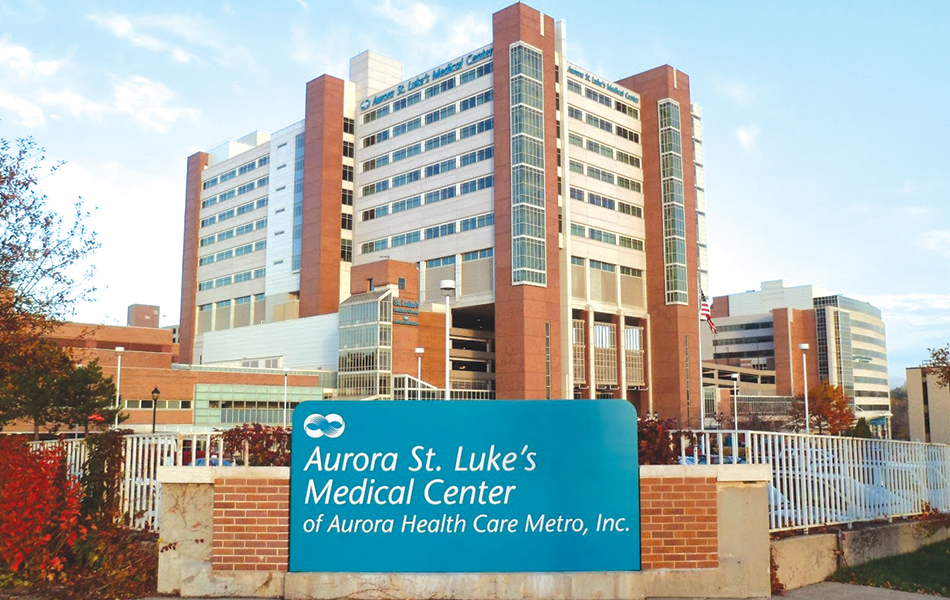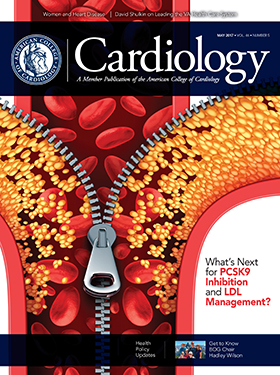Aurora St. Luke's Medical Center: An LAAO Registry Success Story
Members of Aurora St. Luke’s Medical Center of Milwaukee, WI, were among the registry professionals who attended NCDR.16 in Chicago, IL. They attended for best practices, news and updates, and left with ideas for how they could better navigate and collect data using ACC’s LAAO Registry.
One year later during NCDR.17 in Washington, DC, Paula Van Laanen, BSN, RN, Anthony Chambers, BSN, RN, CCRC, and Diane Penzkowksi, MS, RN, presented two posters outlining how they successfully identified best practices, reduced gaps in quality of care and ultimately improved the outcomes of patients who underwent left atrial appendage occlusion (LAAO) and left atrial appendage closure (LAAC) procedures.
On Feb. 8, 2016, the Centers for Medicare and Medicaid Services (CMS) issued a National Coverage Determination (NCD) for LAAC procedures. One of the NCD requirements stated that all facilities performing LAAC procedures must join a CMS-approved registry and track implant and follow-up data.
"After attending the 2016 NCDR meeting in Chicago, we learned that many facilities performing LAAO procedures were not receiving CMS reimbursement for the LAAO procedures." — Diane Penzowski, MS, RN
The same NCD included a shared decision-making requirement that must be completed prior to performing the LAAO procedure. Failure to comply with the shared decision-making requirement impacted many facilities.
“After attending the 2016 NCDR meeting in Chicago, we learned that many facilities performing LAAO procedures were not receiving CMS reimbursement for the LAAO procedures. The cited reason for denial of payment was failure of the facility to adhere to the mandated shared decision-making requirement prior to completing the procedure,” says Penzkowski, Aurora System Director of CV Quality and Care Management.
“Our problem centered on understanding and adhering to the NCD requirement for shared-decision-making,” she adds. The NCD stated that no shared decision-making tool specific to LAAO exists and encouraged the development of one. Compounding the problem was the widely held belief that an informed patient consent was essentially shared decision-making.
“The CMS vision of shared decision-making is more expansive,” says Penzkowski. CMS details the requirement for using an evidence-based tool that must contain specific elements. “One example is the inclusion of diagrams or charts depicting the patient’s risk for stroke or bleeds.”
As a result, six departments at Aurora St. Luke’s Medical Center joined together to discuss how they could provide patients and caregivers with an educational tool to promote an understanding of their condition(s) and the available treatment option(s). This tool would be essential to determine whether a LAAO procedure was appropriate and help the facility meet the NCD requirement.
After reviewing various shared decision-making resources, they decided the U.K. National Institute for Health and Care Excellence (NICE) Patient Decision Aid would be the best fit for their patients, and created a process to incorporate it into their existing system.
First, the patient would be called to discuss the LAAO program. Then, they’d be asked to review the NICE tool mailed to them and were encouraged to bring it to their first appointment with a staff cardiologist independent of the LAAO team, therefore fulfilling another NCD requirement: independent physician review. If a patient was referred to the LAAO program, an appointment with an LAAO physician would be scheduled and medical follow up discussed.
To comply with the LAAO Registry requirements, the staff at Aurora St. Luke’s Medical Center needed to complete four follow-ups within two years for each patient. To ensure they collected complete and accurate data, they needed a streamlined, patient-friendly process that would effectively strengthen the relationship made with their patients during the initial procedure.
With leadership input from seven departments, Aurora St. Luke’s Medical Center developed an effective LAAO log for tracking each case and follow-up status, created a one-page follow-up tool for physicians and advanced practitioners, developed a policy for obtaining medical records from outside facilities, and more.
“Thanks to the hard work and close collaboration of Paula Van Laanen and Anthony Chambers we have been able to effectively utilize our registry clinical tools. This has enabled us to excel in capturing our follow-up data, says Penzkowski. “Our new process has been successful, capturing 100 percent of patient follow-ups, and receiving payment for all but one pending case.

 Read the full May 2017 issue of Cardiology at ACC.org/Cardiology Read the full May 2017 issue of Cardiology at ACC.org/Cardiology |
Keywords: ACC Publications, Cardiology Magazine, Atrial Appendage, Caregivers, Centers for Medicare and Medicaid Services, U.S., Decision Making, Decision Support Techniques, Female, Follow-Up Studies, Informed Consent, Leadership, Medicaid, Medical Records, Medicare, Registries, Registries
< Back to Listings
